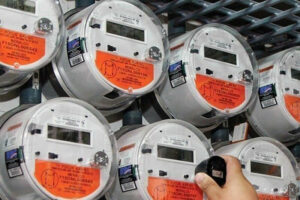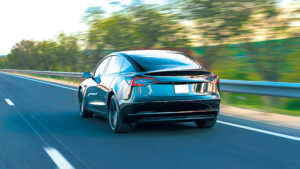Performance on the road is crucial in choosing a vehicle, whether for personal or business use. Vehicles rely on speed, power, precision, and control to perform at their best; and these are made possible by mechanical forces built in each vehicle, among them horsepower and torque — two aspects that speak of what a car’s engine carries within. Thus, these are considerations worth including when choosing a car, on top of features that best suit a driver’s preferences, among others.
Horsepower
Simply put, a horsepower is a unit of measurement used to indicate engine power in cars. It influences speed, acceleration, and overall power of a vehicle.
“Horsepower is a major factor in how fast your car goes when you step on the gas pedal,” an online article from automotive authority Kelley Blue Book (KKB) noted.
Generally, the larger the engine of a vehicle, the greater the horsepower; and the smaller the engine, the lesser the horsepower.
Each type of vehicle has a distinct horsepower. Typically, a standard car carries at least 150 to 175 horsepower; while smaller crossovers and sport utility vehicles (SUVs) measure between 200 to 250 horsepower; and electric vehicles at 250 horsepower. Among larger sized vehicles, larger SUVs consist of 250 to 300 horsepower; while trucks have 200 to 300 horsepower.
Vehicles with higher horsepower engines offer advantages, specifically in speed and acceleration. These engines can maintain higher speeds for longer periods and are considered super-efficient for driving on highways. In trucks, higher horsepower contributes to better towing abilities, as well as highway driving.
At present, horsepower is a key consideration when designing high-performance vehicles. Examples include supercars, or muscle cars, and sports cars, many of which produce at least 500 horsepower in their engines.
However, not every driver needs a vehicle with high horsepower. Some might prefer economic cars, which are smaller, and thus have lower horsepower and consume less fuel. These vehicles are known for their fuel efficiency while keeping top-speed performance.
Torque
Another important engine specification is torque. While horsepower refers to a vehicle’s power, torque refers to its strength. A torque is defined as a measurement of how much force the engine can generate. It is a force that flows from engine to transmission and translates into speed and acceleration. This driving force is what allows cars to either speed up, maintain its pace, or slow down. Additionally, it plays a significant role in how fast vehicles can start or move.
In vehicles, torques are usually measured in Newton-meters (Nm) in the International System of Units, or pound-feet (lb-ft) or pound-inches (lb-in) in the US system. The function of torque is to accelerate the speed of the vehicle. The pistons, which move in up and down motion, produce force and then transfer it to the vehicle’s wheels through transmission and drivetrain.
“Torque is more important than horsepower when you first accelerate. Horsepower is more important than torque when you want to maintain peak performance,” KKB said. “Engineers tune for both, balancing horsepower and torque curves for the desired action.”
Most engines generate at least 100 to 400 lb-ft of torque, and having more torque in an engine means better capabilities for vehicles dealing with heavy tasks. For example, torque is especially important in larger vehicles (i.e., trucks, buses, SUVs, etc.), which are used for carrying heavy loads, pulling trailers, and moving cargos, among others. As a result, these vehicles prioritize higher torques than horsepower, with many of them equipped with at least 400 lb-ft of torque or more in their engines.
Diesel car engines, notable for impressive torque and more power, are usually found in trucks that are equipped with long strokes, allowing pistons with better leverage during rotation, leading to increased force in the engine. Aside from higher torques, diesel car engines are known for having better fuel efficiency and durability.
Electric vehicles (EVs), meanwhile, include instant torque in their engines. In EVs, a torque is produced by an electric motor, which operates through electromagnetism. Unlike traditional engines, torque in EVs is delivered instantaneously. With instant torque, EVs have faster acceleration, increased energy efficiency, simplified mechanical design, and improved driving experience. Furthermore, such EVs can deliver maximum torque that allows seamless acceleration with no lag, with a response time of less than 50 milliseconds. High-performance driving vehicles with instant torques are a better option for a smoother and more efficient driving experience.
Factoring in the two
When looked at closely, a horsepower and torque are interconnected. This relationship is similar to a push-pull dynamic, where the torque does the pushing and horsepower does the pulling in an engine. In essence, a torque is what gets a vehicle moving while the horsepower is responsible for maintaining the top speed.
“You can’t have one without the other, but you can have one high and one low,” the KKB article pointed out.
With horsepower and torque reflecting the capacity of car engines, one should consider whether a car’s engine best suits their needs from a car. While higher torque and horsepower in a vehicle sounds promising, however, it is not always ideal for every vehicle. Those with smaller engines that operate in lower torque and horsepower are equally as efficient.
With each vehicle serving a different purpose, drivers must choose the right engine specifications for their vehicles. Vehicles with higher horsepower are better suited for highways, making it much easier to maintain speeds and overtake vehicles, just when necessary. These vehicles include city cars and motorcycles that are designed for short distance travel.
But with larger vehicles, the higher number of horsepower or torque is not equivalent to more towing capacity, acceleration, or speed. For example, cars with low torque are useful for mountainous areas; while trucks equipped with high torque are needed for towing purposes.
In the local market, advancement in automotive technology have led manufacturers to offer various car models with more horsepower and greater torque.
Recently, Toyota Motor Philippines (TMP) has launched the Toyota GR Supra, a new sports car with 387 horsepower, running at 6,500 revolutions per minute, and 500 Nm of torque.
Another high-performance model is the Toyota Tundra Hybrid engine, which boasts 437 horsepower and 583 lb-ft torque. The Toyota Land Cruiser, a diesel car engine equipped with 302 horsepower and 700 Nm torque, is perfect both on and off-road environments.
TMP has also been driving sustainability further in automobiles through its various hybrid electric vehicle (HEV) models, like the Toyota Prius, with 194 horsepower and 139 lb-ft torque, and the Toyota Prius Prime, with 220 horsepower and 139 lb-ft torque. — Angela Kiara S. Brillantes






